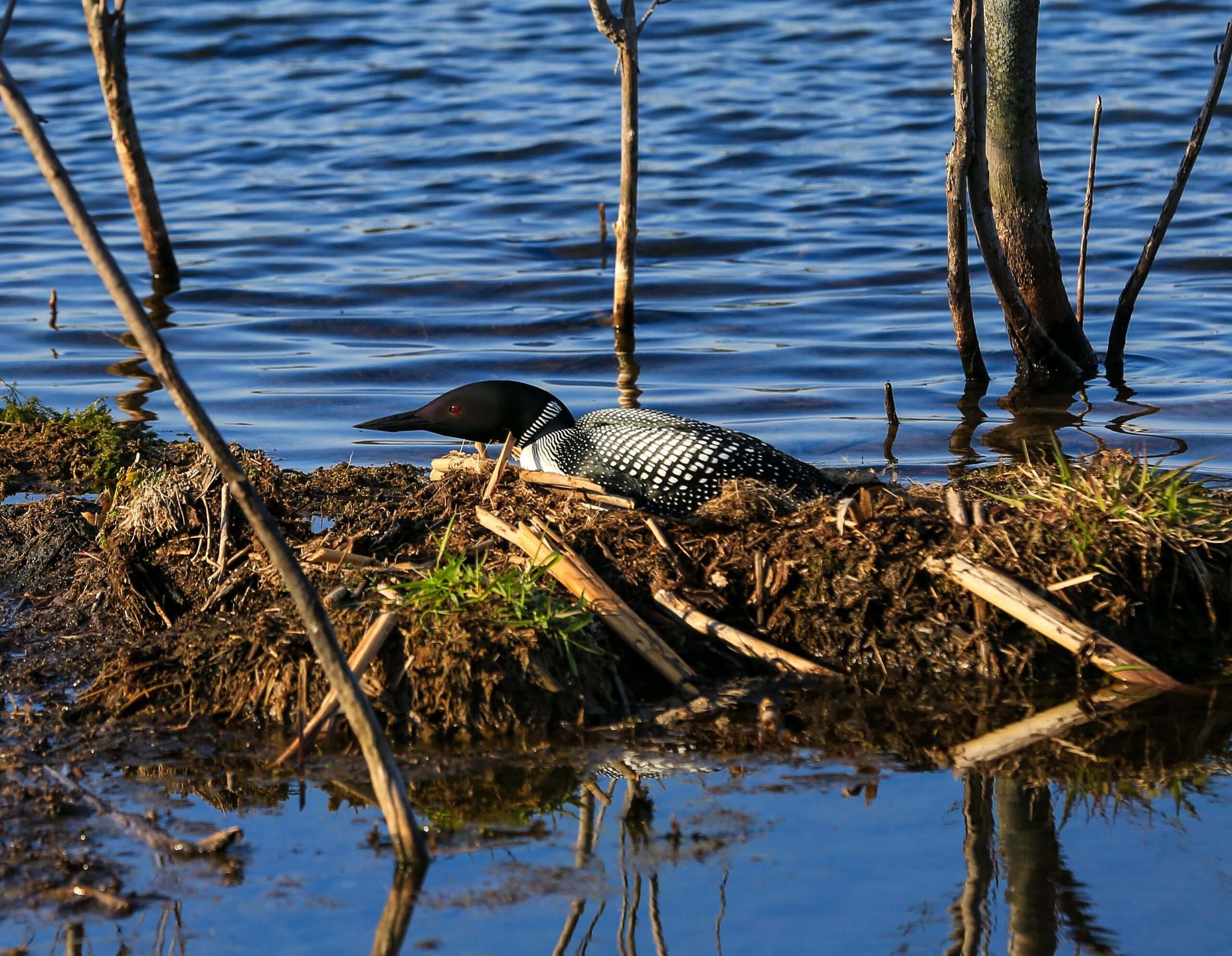The Common Loon is one of the earth’s most ancient birds, its ancestors having originated some 50 million years ago, and the modern Loon about 10 million years ago.
The loons’ hauntingly beautiful voice is matched by its striking plumage, with a collar of white stripes and intricate patterns of white and black feathers on wings and back.
The loon wanders endlessly. It summers on northern lakes and migrates in a perilous journey to the seacoast each fall. Its return to familiar northern lakes signals the end of a long winter. To many, the Common Loon is wilderness, and beckons us to recall when life was simpler. To hear the loon as we stir in the early morning light soothes the soul.
The loon is most at home on the water. Its legs and large, webbed feet are set far back on the body, providing excellent propulsion underwater, but making it difficult for the bird to walk on land. Its solid, rather than typically avian hollow bones make it an excellent Diver-its name in the old world. Its heavy body and high wing loading require it to run, and then fly along the water for hundreds of yards to become airborne.
Small fish are the favorite food of the loon, although they may also eat frogs, small invertebrates, crustaceans, and aquatic plants. A loon catches and eats its food with its spear-like bill while diving underwater. Dives can last for several minutes, during which the bird can cover considerable distances, and apparently vanish.

Breeding.
Loon nests are always constructed near water. The female usually lays two eggs. The male and female share in incubating the eggs for about 28 days, and the nest is defended vigorously during incubation. The downy, black chicks leave the nest soon after they hatch and depend on the adults for food for about eight weeks. The young loon often rides “piggyback” on a parent, finding warmth, safety and security atop the more experienced bird.
They soon learn to fish, and in the fall migrate alone to the sea, where they remain for three years until they too return to their natal lake or nearby to raise another generation of loon chicks. A loon may live as long as 20-30 years.
Range.
The Common Loon is a bird species found across the world. In North America, there are breeding populations in Alaska, Canada, and many northern states in the United States such as Maine, Minnesota, Michigan, and Wisconsin.
Outside of breeding season, loons migrate to coastal areas, such as the Pacific and Atlantic coasts. Populations of the Common Loon have declined in many parts of its range due to habitat loss, pollution, and human disturbance.

